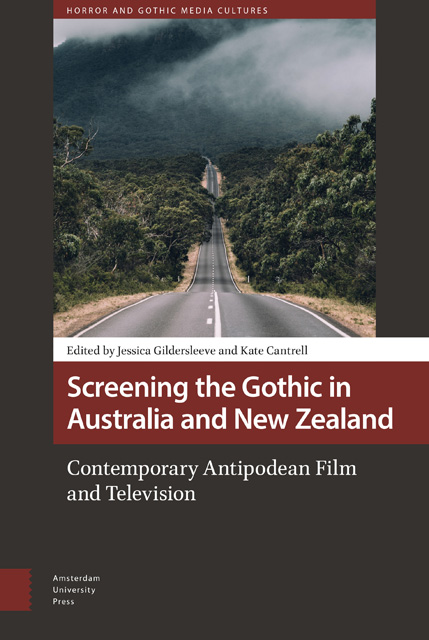2 - When I Died, I Saw the Whole World’ : Uncanny Space and the Māori Gothic in the Aftermath Narratives of Waru and Māui’s Hook
Published online by Cambridge University Press: 24 November 2022
Summary
Abstract
This chapter considers the applicability of gothic elements to the indigenous culture of Aotearoa New Zealand by addressing how uncanny space manifests in the aftermath of death in two recent Māori films: Waru (2017) and Māui's Hook (2018). These films present a tension between western gothic parameters and distinct elements of Māori culture, yet also foreground a possible co-existence between the two. This relationship can be identified in a mode of the uncanny that reflects the historical and contemporary experience of Māori in postcolonial New Zealand society. This reworking of the uncanny, in which estrangement is turned back on itself, takes on a political function in articulating the experience and process of overcoming historical trauma through a Māori cultural framework.
Keywords: Indigenous Gothic; Māori film; New Zealand film; postcolonial; haunting
This chapter considers the applicability of gothic elements to the Indigenous culture of Aotearoa New Zealand by addressing how uncanny space manifests in the aftermath of death in two recent Māori films: Waru (2017) and Māui's Hook (2018). While gothic conventions of uncanny haunting can be identified, these films nonetheless present a tension between western Gothic and Māori beliefs, voices, and values that do not typically align with gothic parameters. I argue, however, that the temporal emphasis on aftermath in Waru and Māui's Hook enables a culturally specific mode of the uncanny to manifest. The construction of uncanny spaces where characters are haunted by tragic events of the past foregrounds an experience of cultural estrangement connected to the oppression and repression of Māori perspectives in postcolonial New Zealand society. The reworking of the uncanny in these Māori films facilitates an Indigenous vocalization of recurring historical trauma through the oppression of Māori voices in the postcolonial present. In the opening sequences of both Waru and Māui's Hook, death acts as a catalyst for the unfolding narratives; as such, gothic templates might seem readily applicable, but they also highlight the conundrum of analysing Indigenous cultures of postcolonial contexts within gothic parameters. In the opening of Waru, we hear a voiceover of the eponymous character, a young boy who has died from adult neglect: ‘When I died, I saw the whole world’.
- Type
- Chapter
- Information
- Screening the Gothic in Australia and New ZealandContemporary Antipodean Film and Television, pp. 45 - 60Publisher: Amsterdam University PressPrint publication year: 2022



